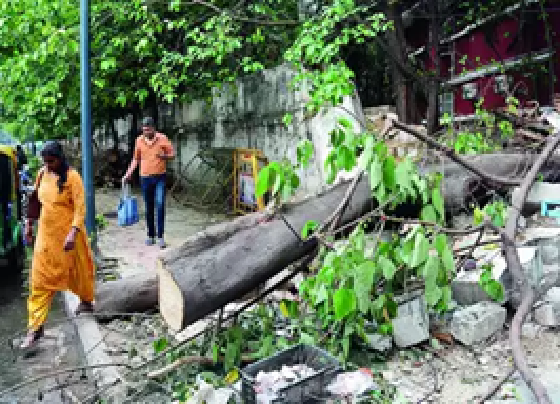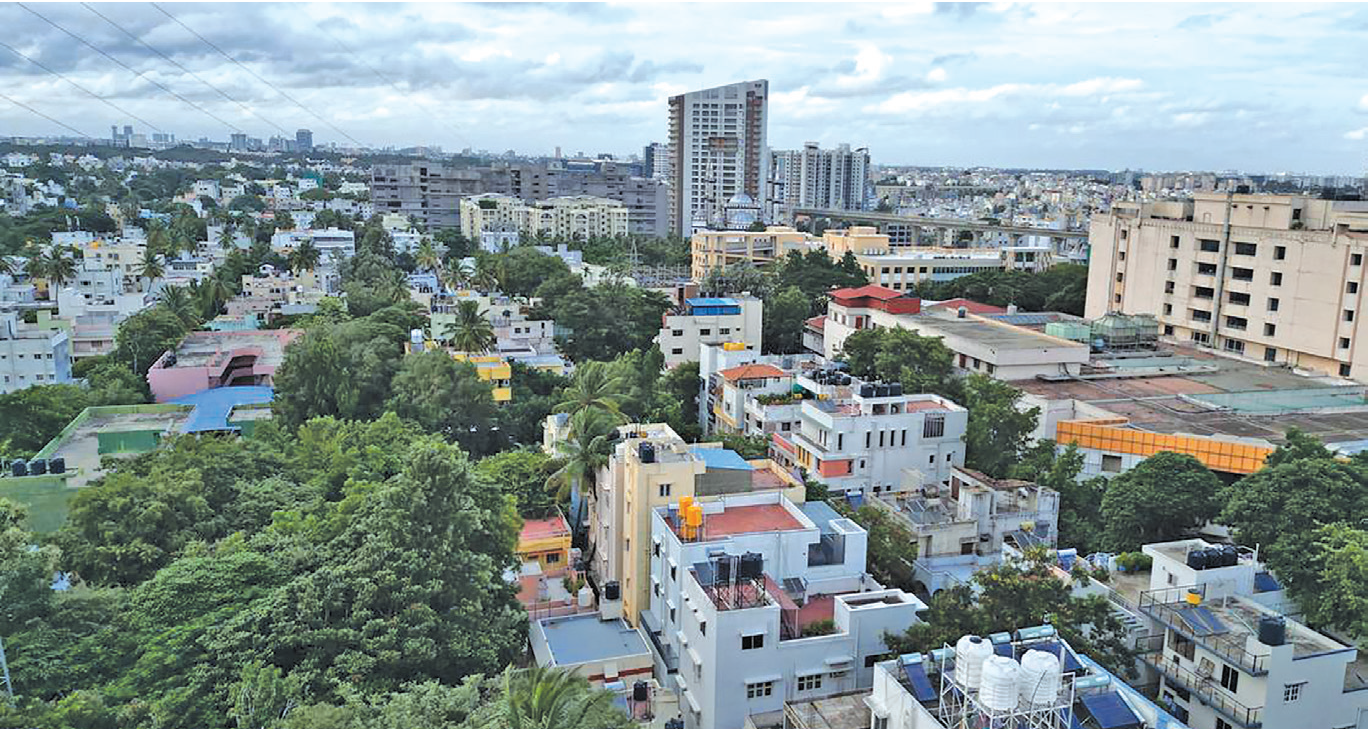
City yet to have a climate action plan
Soumik Dutta I NT
Bengaluru: The Department of Science and Technology has identified Bengaluru to be moderately vulnerable to climate change-associated risks. Yet, it is one of the only metro cities in India that still does not have a Climate Action Plan (CAP) or a road map in place to mitigate risks or adapt to climate change.
The deluge and consequent loss of life and economy of the city, it seems, has failed to teach any lessons. Any old resident of Bengaluru will vouch for the rising temperatures and changing rainfall patterns in the city.
An analysis of the time series data for rainfall and temperature for Bengaluru shows a significant change in both over the past decade. It is estimated that nearly 91% of the city faces a high degree of climate vulnerability, which calls for urgent and immediate action by the local government.
The impact of such climate change-induced disasters are only made worse by unregulated urbanisation and the unpreparedness of government agencies. The Bruhat Bengaluru Mahanagara Palike (BBMP) has voluntarily committed to C-40 Cities, a global work of 100 world-leading cities that are collaborating to deliver the urgently needed action to confront the climate crisis (meeting the objectives of the Paris Agreement).
BBMP's climate action plan initiatives In 2021, BBMP initiated the preparation of the Climate Action and Resilience Plan for Bengaluru and partnered with the global research organisation, World Resources Institute (WRI) India as a knowledge partner on the same.
Any plan to be successful and meet its objective should be integrated and well-grounded in the existing institutional structure of the local government, which is not happening in Bengaluru. Climate change needs to be mitigated through measures such as energy efficiency, promoting the 3 R’s (reduce, reuse, and recycle) at the household level, waste-to-energy conversion, and improving water and drainage management.
These issues are all interdependent and must be managed by a single team; in reality, it is not integrated. Karnataka has estimated that it needs a budget allocation of Rs 20, 88,041.23 crore by 2025 and Rs 52, 82,744.32 crores by 2030 for climate change adaptation and mitigation efforts.
Karnataka State Action Plan
The estimation has been drawn up by the draft of the Karnataka State Action Plan of Climate Change - Version-2, which is the second version of a 2015 report prepared by the Environmental Management and Policy Research Institute (EMPRI). The report has been placed before the Central Government for approval and implementation.
The report has projected that summer and winter temperatures would change by 0.5 to 2.5 degrees Celsius and rain days will increase, which will impact Rabi and Kharif crops. The study, which is part of the state government’s draft climate action plan, states that forested grids in seven districts, Bijapur, Raichur, Koppal, Bellary, Chitradurga, Kodagu, and Hassan, will be impacted by climate change.
Climate experts have warned that Karnataka is likely to be more vulnerable to climate change in India than other states.
Climate resilient development
A report, ‘Transitioning towards climate-resilient development in Karnataka,’ has been prepared by 26 experts from institutions based in Karnataka (including Bengaluru), London, and New Delhi under the leadership of Prof N H Ravindranath and Prof G Bala of IISc, to alert the State government to act fast to reduce consequences of climate change.
Researchers from the Indian Institute of Technology, Kharagpur have analysed Bengaluru’s urban expansion and how it affected surface temperatures.
Urban heat islands(UHI) get created due to unplanned urbanisation as in Bengaluru, the report said. These islands / pockets are areas with closely spaced buildings and high population density. Heat gets trapped in these areas, especially between buildings, increasing the temperature.
Urban heat islands
Land surface temperature (LST) is a proxy indicator of urban heat islands. LST is the skin temperature of the earth’s surface, which is normally more than the air temperature. If the land has been heated for a long time, then heat absorbed by the surface becomes high. The LST also defines climate change in terms of the greenhouse effect and global warming.
Higher LST can be attributed to increasing human activities like transportation, construction, and power generation, leading to higher pollution levels and the emission of greenhouse gases. The study found that the urban surface temperature spiked up from 33.08oc to 41oc in Bengaluru. The study showed lower LST areas as well as high LST areas within the city
 English daily published in Bengaluru & Doha
English daily published in Bengaluru & Doha






